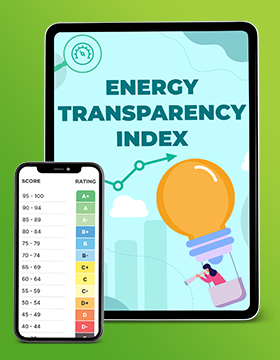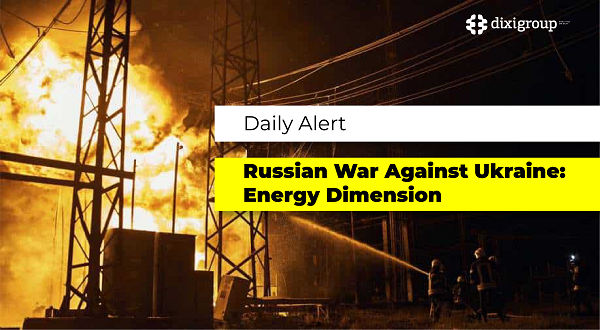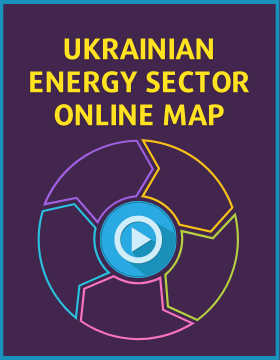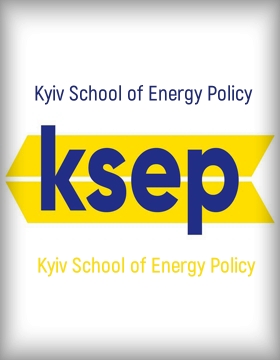How Ukraine has been importing gas since the war
But what new routes help to circumvent the Russian threat?

According to the Minister of Energy of Ukraine Herman Galushchenko, the country plans to import at least 4.6 billion cubic meters of natural gas, which is approximately 40% of the expected needs in the winter period.
Ukrainian Energy learned what opportunities exist in the market to ensure sufficient volumes of gas purchases for Ukrainian consumers, and also understood the problems that may affect the implementation of such plans.
Official assessments
Herman Galushchenko said that as a result of targeted Russian strikes in February, Ukraine lost more than half of its own gas production capacity, so the issue of accumulating reserves before the heating season is extremely urgent. According to the operator of underground gas storage facilities Ukrtransgaz, currently about 7.3 billion cubic meters of gas are stored in Ukrainian UGSs. The goal is at least 14-15 billion cubic meters by the beginning of November.
The Minister is confident that Ukraine will be supplied with gas in the volume necessary for the sustainable passage of the heating season. This is about providing the resource to both citizens and businesses, including the needs of electricity producers.
He emphasized that the volume of 4.6 billion cubic meters is the minimum target for import and injection into underground storage facilities. “2.9 billion cubic meters of imported gas have already been contracted, which will be stored in storage facilities. These contracts have been financially confirmed,” said Herman Galushchenko.
Import prospects
In the context of preparing for the next winter and the risks associated with Russian military aggression, DiXi Group analysts are considering three scenarios for creating gas reserves. The first - optimistic - assumes a volume of 15 billion cubic meters in underground storage facilities, which will ensure the stability of consumer supply even in the event of a worsening situation and a crisis. The second scenario – the average one – will be implemented if 13 billion cubic meters of gas are accumulated by November 1. This volume, as analysts note, will be sufficient for basic needs, but it will be limited in case of complications. After all, the pessimistic scenario refers to reserves of 11–12 billion cubic meters in underground storage facilities, which makes the need for additional purchases on the spot market at higher prices, which are usually observed in winter, highly likely.
However, the situation is currently developing in a positive direction for increasing gas imports to Ukraine. Traders note: domestic prices in Ukraine exceed 50 euros/MWh, which is approximately 10 euros higher than the base index of the Dutch TTF hub, so private companies are interested in supplying gas to Ukrainian customers.
The price situation on the Ukrainian market remained favorable even after the price of gas on the TTF on Tuesday this week fell by more than 10% to €35.3/MWh amid reports of easing geopolitical tensions in the Middle East and the end of the 12-day war between Israel and Iran.
“The Ukrainian market has been largely dependent on fluctuations in natural gas in Europe in recent weeks. A decrease in natural gas prices on European hubs may trigger a decrease in prices on the Ukrainian market as well – to the level of TTF +€10-12/MWh, which is about UAH 29,000 per thousand cubic meters. If prices on the domestic market remain at a higher level, private companies may increase imports of natural gas from Europe to Ukraine. At least several companies have already imported gas to Ukraine in June,” says a review by the consulting company ExPro.
Balkan route
According to estimates by Naftogaz of Ukraine and market participants, Ukraine needs to import at least 5 billion cubic meters of gas to ensure stable supplies to consumers in the winter. However, there are serious obstacles at the borders: firstly, this is the overloading of crossing points with Hungary, Slovakia and Poland, and secondly, high transit tariffs in Romania and Moldova.
On June 19, the GTS operators of Greece, Bulgaria, Romania, Moldova and Ukraine held a joint presentation of a new plan for gas supplies to Ukraine via the Trans-Balkan Corridor with a capacity of 20 billion cubic meters per year.
The key change is the possibility of nominating gas from a Greek virtual trading point, which will significantly expand the range of potential suppliers if approved by the Greek regulator. The capacity of the route will allow transporting up to 90 million cubic meters per month.
Acting The head of the GTS Operator of Ukraine, Vladislav Medvedev, stressed that the Trans-Balkan route provides Ukraine with access to: LNG from terminals in Greece and Turkey, Azerbaijani gas via the Trans-Adriatic Pipeline, deposits in the Black Sea near Romania and, possibly, Bulgaria. According to him, the supply conditions will be competitive until October and temporarily compensate for high transit tariffs.
Tariff competition
On Monday, June 23, an auction for winter gas supplies to Ukraine via the Trans-Balkan route for July was held. Only 0.163 million cubic meters per day were sold, which is only 5% of the offered 3 million cubic meters per day, according to the RBP (Regional Booking Platform) - an electronic platform for booking capacities in the gas transportation systems of the countries of Central and Eastern Europe. The tender lasted only 30 minutes, and, as regional traders explained, the short period for submitting applications was one of the reasons for the low interest.
This was the second joint auction organized by the gas transmission operators (GTOs) of Ukraine, Moldova, Romania, Bulgaria and Greece. The first auction, which took place in May and concerned June supplies, did not attract any buyers at all.
Two traders speaking to Montel said they expected higher bookings after the TRP made efforts to make the product more attractive.
Moldova’s energy regulator last week separately approved changes to its legislation to reduce high tariffs on the Trans-Balkan gas pipeline route that have long hampered its efficient use. One key innovation was the introduction of a discount that would halve the cost of transporting gas on the section between Romania and Moldova, one of the most expensive parts of the Trans-Balkan gas pipeline route to Ukraine.
The monthly auctions were introduced to build up Ukraine’s gas reserves ahead of winter, given the ongoing threat from Russia to the country’s energy infrastructure due to the war.
“The auction attracted interest from market participants, including two international users who booked capacity. The result confirms the growing role of the Trans-Balkan Gas Pipeline as a reliable, diversified and commercially competitive route for transporting natural gas from South-Eastern Europe to Ukraine,” the Greek TRP Desfa said in a statement.
Wide opportunities
Ukraine’s high demand for imported gas for injection into underground storage facilities and high prices on the Ukrainian domestic market have recently stimulated a boom in gas trade in the countries of Central and Eastern Europe (CEE). To satisfy the interest in supplies, new transit corridors are not only emerging in this region. TSOs are also competing for the attractiveness of solutions: reducing tariffs or increasing capacity.
This is evidenced not only by the auctions for booking capacity for gas delivery via the Trans-Balkan Gas Pipeline. In early June, the national state holding company Naftogaz of Ukraine became the first in CEE to use the Danish-Polish transit corridor for spot supplies to Ukraine. This was reported by the consulting company ICIS (Independent Commodity Intelligence Services) with reference to market sources. According to its data, Naftogaz made a test booking on the Baltic Pipe pipeline, which supplies gas from Norway through Denmark, the Baltic Sea to Poland.
“The Polish state company Orlen has a long-term booking of 8 billion cubic meters per year on the Baltic Pipe towards Denmark. At the same time, the Danish GTO Energinet is interested in promoting the remaining 2 billion cubic meters per year for gas export from the North Sea or import via the Danish virtual trading point to other companies in the region,” ICIS analysts note, adding: “This route is increasingly being considered due to the convenience of doing business in Denmark. Additionally, the expected reduction in short-term tariffs in Poland and the doubling of guaranteed export capacity from Poland to Ukraine from July 1 from 6 to 11.5 million cubic meters per day are playing in its favor.
Traders are also considering the possibility of importing liquefied natural gas (LNG) through terminals in Swinoujscie (Poland) or Klaipeda (Lithuania). However, several of them noted that market liquidity in the countries of the region is limited, since the main volume of blue fuel is traded on the spot market.
Supply risks
Difficulties for Ukraine in purchasing gas for the next heating season may arise not only due to the shortage of available volumes on external markets. Additional costs due to rising gas prices may also become a significant burden.
The benchmark European gas contract for one-month delivery in the second half of 2025 will trade almost 5% higher year-on-year in the second half of 2025, commodity analysts at Italy’s largest bank Intesa Sanpaolo predict, amid geopolitical tensions. The price is expected to average €40.40 per MWh by the end of the year, compared with €38.53 per MWh in the second half of 2024 and €41.40 /MWh so far this year. Overall, gas prices could fluctuate in a range of €30-50 per MWh for the rest of 2025. “The wide trading range reflects expectations that volatility will remain high in the coming months,” explained Daniela Corsini, senior economist at the bank.
Intesa Sanpaolo also warned: “LNG supplies may not be enough to meet Europe’s high summer gas demand and at the same time replenish seasonal stocks, given the ongoing reduction in Russian pipeline gas supplies.”
Analysts believe that EU storage could reach a maximum of only 82% by the start of winter – the lowest level since 2021, when the maximum barely exceeded 77%. According to Gas Infrastructure Europe, the current level of storage in EU countries is 56.6%.
Svitlana Dolinchuk, specially for “Ukrainian Energy”








